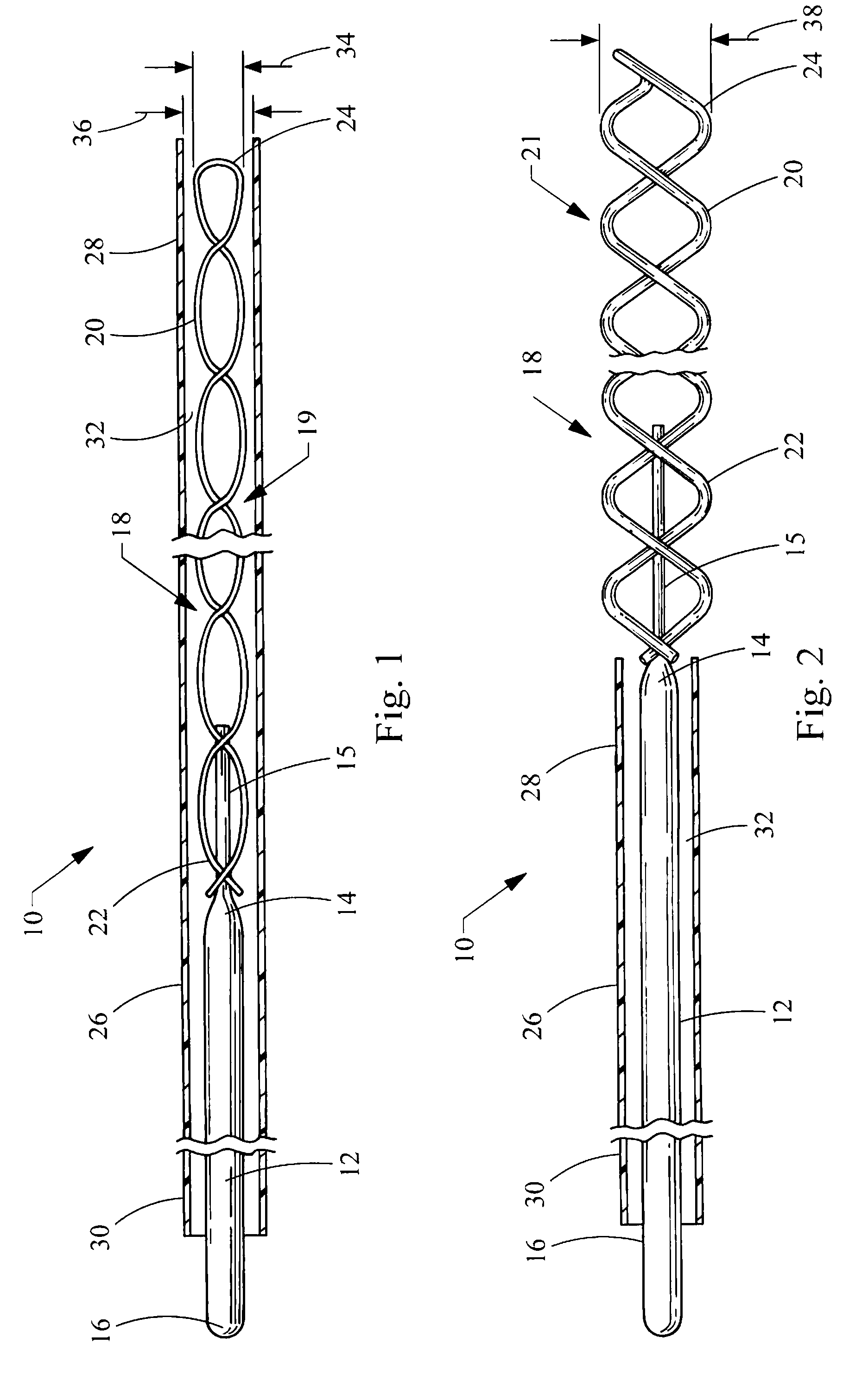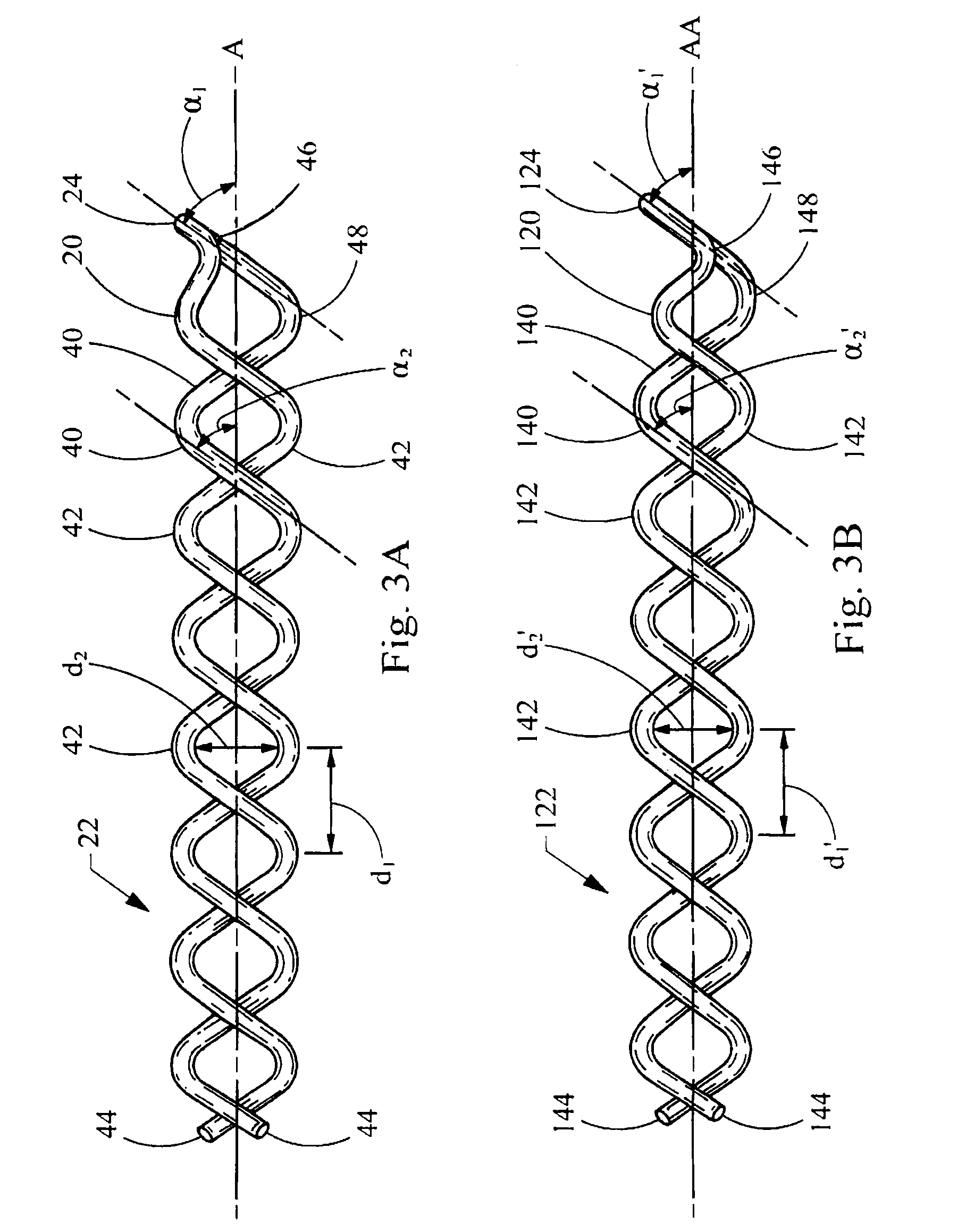Thrombus removal device
a technology of thrombosis and thrombosis, which is applied in the field of medical devices, can solve the problems of corkscrew devices, which may be even more difficult to remove, and all of these devices, and achieve the effect of small and flexibl
- Summary
- Abstract
- Description
- Claims
- Application Information
AI Technical Summary
Benefits of technology
Problems solved by technology
Method used
Image
Examples
Embodiment Construction
[0035]Referring now to FIG. 1, a thrombus removal device embodying the principles of the present invention is illustrated therein and designated at 10. As its primary components the device 10 includes a shaft 12 having a proximal end 16 extending to a distal end 14 attached to a helical coil 18. The helical coil 18 has a distal portion 20 including a distal tip 24 and a proximal portion 22. A sheath 26 having a distal end 28 and a proximal end 30 defines a lumen 32 within which the shaft 12 and helical coil 18 are disposed. The device 10 is small and flexible to enable the helical coil 18 to penetrate a thrombus or clot without posing a danger of penetrating a body vessel wall (not shown).
[0036]The helical coil 18 is made of wire and in FIG. 1 is shown in a closed configuration 19, compressed inside the lumen 32 of the distal end 28 of the sheath 26. In the closed configuration 19, the helical coil 18 has a first outer diameter 34. When the sheath 26 is retracted proximally in FIG. ...
PUM
 Login to View More
Login to View More Abstract
Description
Claims
Application Information
 Login to View More
Login to View More - R&D
- Intellectual Property
- Life Sciences
- Materials
- Tech Scout
- Unparalleled Data Quality
- Higher Quality Content
- 60% Fewer Hallucinations
Browse by: Latest US Patents, China's latest patents, Technical Efficacy Thesaurus, Application Domain, Technology Topic, Popular Technical Reports.
© 2025 PatSnap. All rights reserved.Legal|Privacy policy|Modern Slavery Act Transparency Statement|Sitemap|About US| Contact US: help@patsnap.com



